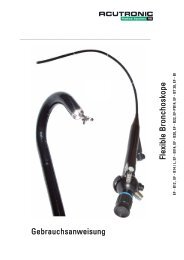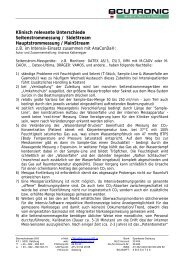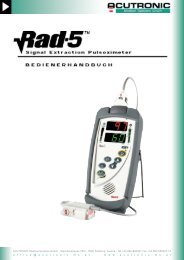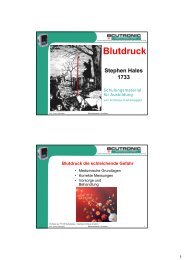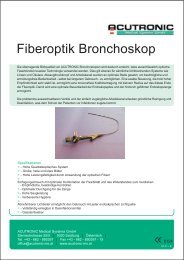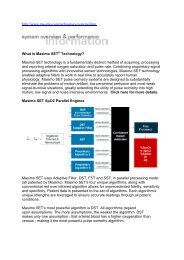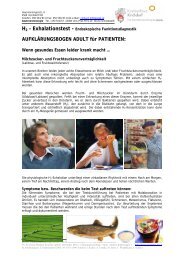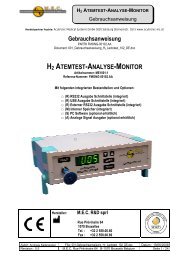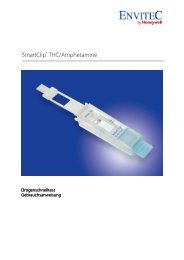Summary Carbon Monoxide Lurking within: The Danger of ...
Summary Carbon Monoxide Lurking within: The Danger of ...
Summary Carbon Monoxide Lurking within: The Danger of ...
Create successful ePaper yourself
Turn your PDF publications into a flip-book with our unique Google optimized e-Paper software.
m a s i m o c o r p o r a t i o n 4 0 p a r k e r i r v i n e c a 9 2 6 1 8 w w w. m a s i m o . c o m<br />
Carboxyhemoglobinemia in Acute Care<br />
<strong>The</strong> desiccant does not transition from fully functional to suddenly consumed. <strong>The</strong> transition<br />
occurs over time, and thus, some patients may be exposed to low, but clinically significant levels<br />
<strong>of</strong> CO during a time when they can ill-afford a compromise to oxygen delivery, especially to<br />
the heart and brain. Case studies demonstrate this, and in spite <strong>of</strong> the general awareness and<br />
the adjustment <strong>of</strong> guidelines to thwart the possibility <strong>of</strong> this unfortunate preventable adverse<br />
event, it occurs even today. As concern has grown, the Anesthesia Patient Safety Foundation<br />
held a conference entitled <strong>Carbon</strong> Dioxide Absorbent Desiccation: APSF Conference on<br />
Safety Considerations on April 27, 2005. From the proceedings: “<strong>The</strong>re is increasing evidence<br />
that exposure <strong>of</strong> volatile anesthetics to desiccated carbon dioxide absorbents may result in<br />
exothermic reactions leading to fires in anesthetic breathing circuits and production <strong>of</strong> toxic<br />
products (e.g., carbon monoxide, compound A, methanol, formaldehyde)… In some cases this<br />
may lead to sub-clinical carbon monoxide exposure.”<br />
<strong>The</strong> exact incidence <strong>of</strong> patient exposure to CO through CO 2 absorbent desiccation is unknown.<br />
<strong>The</strong> American Society <strong>of</strong> Anesthesia (ASA) estimates that 25 million anesthetic procedures are<br />
performed each year in the US. If as little as 33 percent <strong>of</strong> these anesthetics involve is<strong>of</strong>lurane,<br />
enflurane, or desflurane, and if four cases are performed in the average operating room each<br />
day so that 25 percent <strong>of</strong> cases will be first cases, i.e., the most likely to be impacted by<br />
desiccated absorbent, then up to 2 million patients may be at risk each year for intraoperative<br />
CO exposure. 7 If the published incidence <strong>of</strong> CO exposures can be extrapolated to other<br />
institutions and remains between 0.0005 and 0.005 first cases, 8 then approximately 1,000-10,000<br />
patients may be exposed to CO annually in the US as a result <strong>of</strong> anesthetic breakdown. If these<br />
CO poisonings go undetected they can't be treated and injury and even death can occur.<br />
Reports <strong>of</strong> elevated COHb concentrations detected intraoperatively in humans have ranged from<br />
7 to 32 percent. 9-11 Berry et al. reported a patient who attained 36 percent COHb. 12 As a subject<br />
in a clinical study, the patient was a healthy female who did not appear to be adversely affected<br />
by her CO exposure. However, it may be possible that far lower CO exposure in the presence <strong>of</strong><br />
concurrent disease may predispose patients to far greater risks. In patients with coronary artery<br />
disease, COHb levels as low as 2.9-4.5 percent can exacerbate myocardial ischemia. 13-14 Similarly,<br />
smoke inhalation with relatively mild CO exposure (COHb levels



